ROI answers a fundamental question: Am I getting more out of this than I’m putting into it?
Marketing teams in particular know how critical it is to justify their budgets, which means being able to show a positive return on all their investments.
For some investments though, that’s easier said than done. Historically, SEO has fallen into the “difficult to measure” camp.
Continue reading to learn why, or jump to a section:
- Why has it historically been so difficult to calculate the ROI of SEO?
- How is the ROI of SEO calculated?
- How much does SEO cost?
- SEO KPIs: How do you measure SEO success?
- Is SEO profitable? 5 ways you can benefit from organic search
Why has it historically been so difficult to calculate the ROI of SEO?
To calculate the ROI of anything, you need to know two figures: the return and the investment.
The investment
With paid advertising, placement is a commodity that can be purchased — a form of digital rent that can keep you there as long as you’re willing and able to pay for it. In other words, visibility is attached to a specific cost.
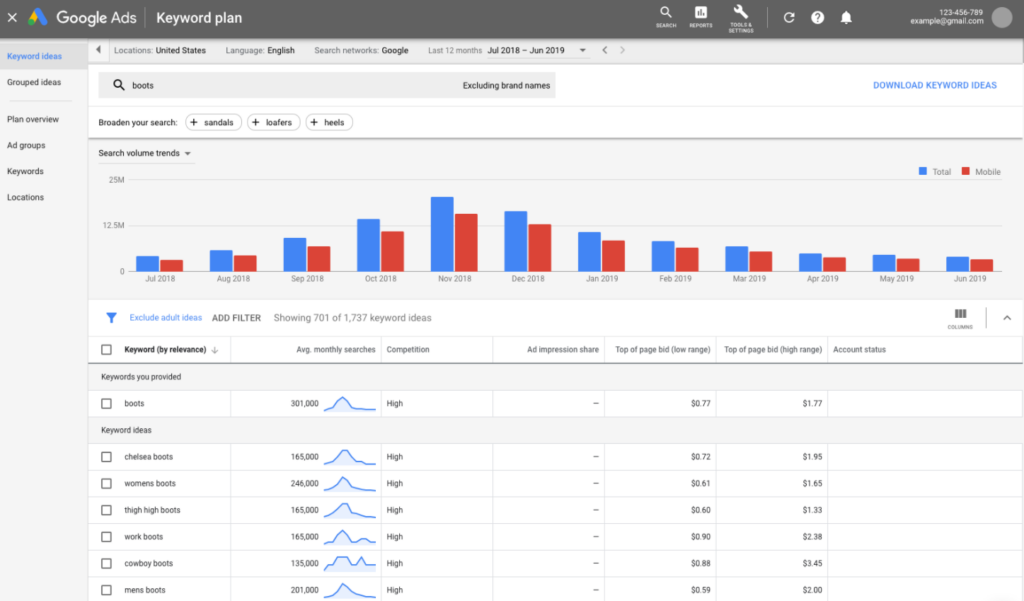

It’s a little different with SEO.
SEO is the process of earning visibility, not purchasing it. The fact that placement isn’t purchasable like it is with paid advertising makes it a little trickier (but not impossible!) to calculate the “I” in ROI.
The return
With paid advertising, tracking parameters are typically appended to URLs that you pay to have show up on a given platform. This allows you to see things like how many times a specific ad was clicked on. Setting up conversion tracking can also show you how many of those clicks turned into conversions (i.e. a behavior, typically on your website, that you’ve assigned value to, like purchases or form fills).
For example, setting up conversion tracking in Google Ads can allow you to see which ads and the specific keywords that triggered those ads are most successful (i.e. produced the most conversions/revenue) for your business.
Because placement in organic search results is something you earn for your canonical (actual/main) URLs, there’s no tracking parameter. And, since Google search went secure, we don’t see the specific keyword that led to a conversion. Instead, we see “(not provided)”, although we still get an aggregated list of the top 1,000 search queries that drove traffic to our site via Google Search Console (or more keywords via the GSC API, which you can access with RealKeywords).
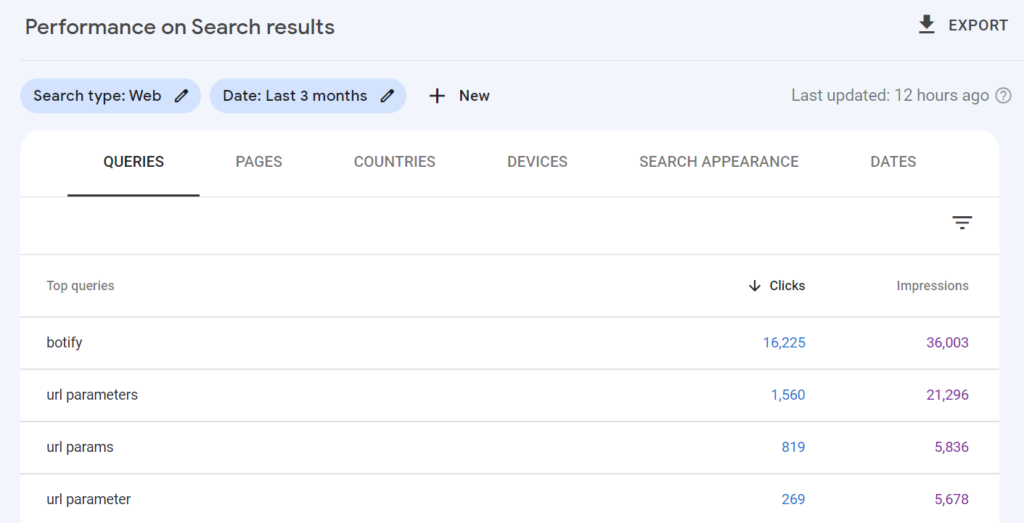

However, neither of those factors means you can’t attach value to SEO. It just works a little differently than paid advertising.
Here’s how.
How is the ROI of SEO calculated?
The process for quantifying the value of SEO is slightly different depending on how you make money from your website.
We’ll focus on two main types of website monetization:
- On-site purchases (e-commerce)
- Off-site purchases (lead generation)
How to calculate the value of SEO for e-commerce websites
Calculating specific dollar amounts that a particular channel (like organic search) generates for your business is easiest with e-commerce because purchases are made on the website itself. You just need to set up e-commerce tracking.
If you use Google Analytics, you can set this up at the View level.
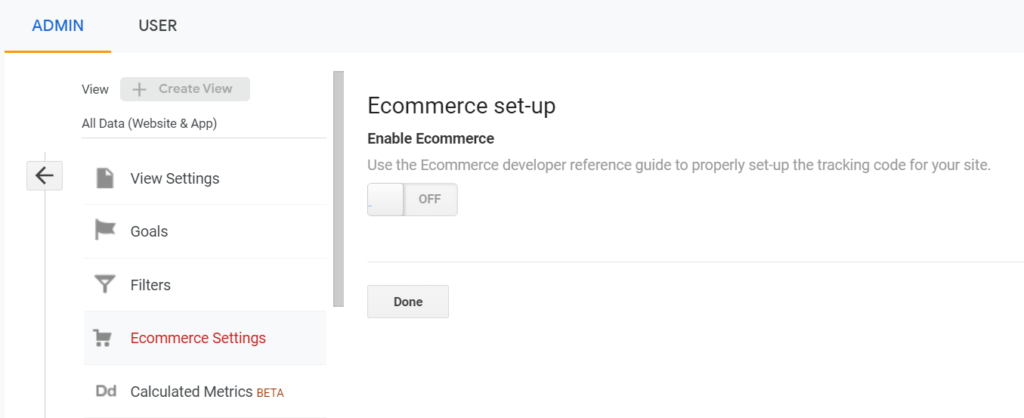

You’ll just need to add some JavaScript to your website that sends your e-commerce data (i.e. revenue, purchases, average price, etc.) to Google Analytics.
Once you do, you’ll be able to view e-commerce reports such as:
- Overview: Summary of Revenue, Ecommerce Conversion Rate, Transactions, Average Order Value and other metrics.
- Product Performance: Revenue, Purchases, Quantity, Average Price, and Average QTY by SKU and Category.
- Sales Performance: Revenue by Date.
- Transactions: Revenue, Tax, Shipping, and Quantity by Transaction ID.
- Time to Purchase: Days to Transaction and Sessions to Transaction.
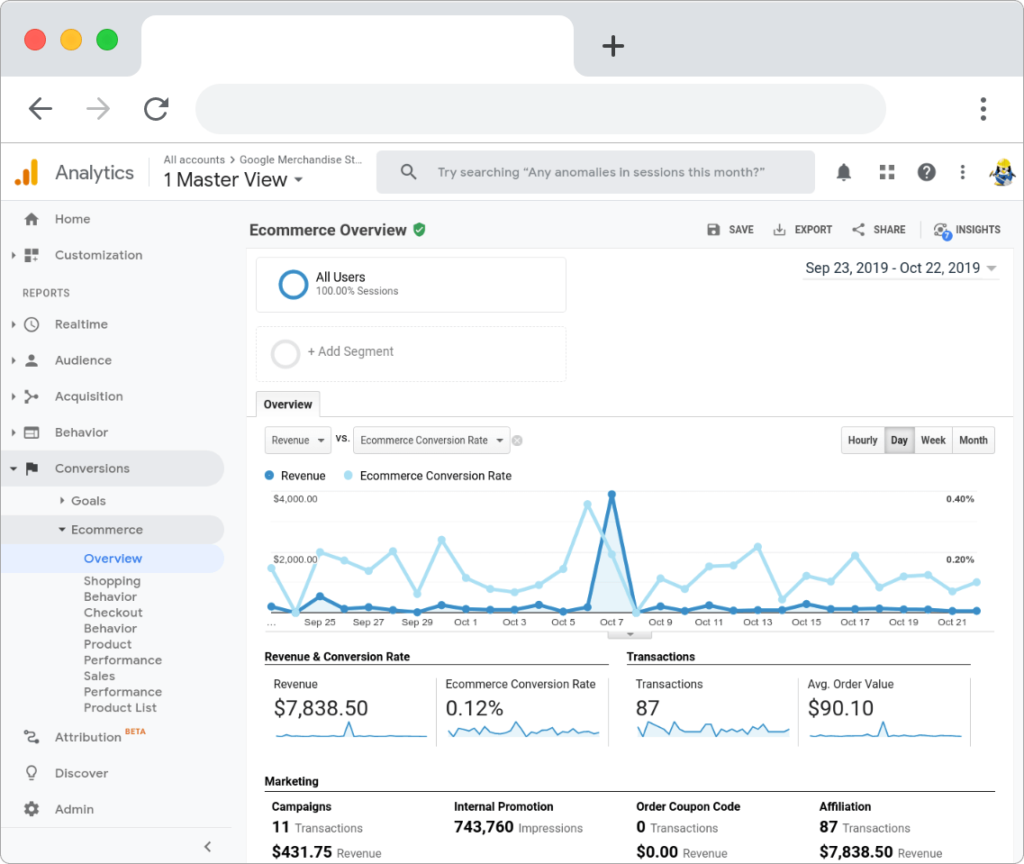

…which you can then segment by channel, like Organic Traffic, to see how much revenue is coming from your SEO efforts.
How to calculate the value of SEO for lead generation websites
Lead generation websites are those where the actual purchase is made offline, but the interest is generated online. The Botify website, for example is a lead generation site since you can’t purchase our software on the website itself — interested parties first submit an interest form.
What makes this slightly more difficult than calculating organic search revenue on e-commerce websites is that not everyone who submits an interest form will become a customer, and customers typically represent ongoing revenue rather than a one-time purchase.
So how do we solve for this? Goal values.
If you use Google Analytics for your tracking, you can set up goals on your Views.


Google provides a few default goals as well as the option to set up custom goals.
Let’s say, for example, you chose the “Contact Us” option and configured Google Analytics to track any time someone submitted landed on your “contact thank you” page, or triggered an event like clicking the “submit” button.
At this point, you have the option to assign a dollar value to that goal. This would mean that any time someone completed the goal you specified, it would track $X made.
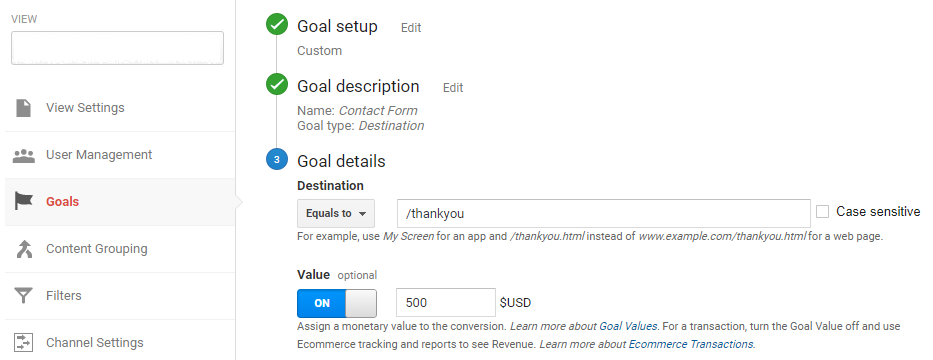

But how do you figure out what dollar value to assign to your goals?
The formula that works for many organizations operating this type of website is:
LTV x Close Rate = Goal Value
- LTV: This is your average lifetime value of a customer. Someone like your CFO should know this number.
- Close Rate: The percentage of leads that become customers.
So, for example, if you know that the average lifetime value of your customers is $10,000 and 10% of everyone who submits a form on your site eventually becomes a customer, then you could set a goal value of $1,000.
You can learn more about goal values here.
From here, just like with e-commerce tracking, you can segment by channel = organic traffic to see how much revenue SEO is producing for your business.
Assisted vs. Last Click Conversions in SEO
One objection to SEO you might have heard (or even said yourself!) is that “SEO drives traffic, but not the right kind of traffic.”
In that sentence, “right kind” typically means “revenue generating.” The truth of that statement, in part, depends on how you assign value to your digital channels (aka “attribution modeling”).
There are lots of different attribution models out there. For example, the “Last Interaction” model gives 100% of the credit for a conversion to the final touchpoint. That means SEO would only get the credit for that revenue if the customer’s session came through organic search.
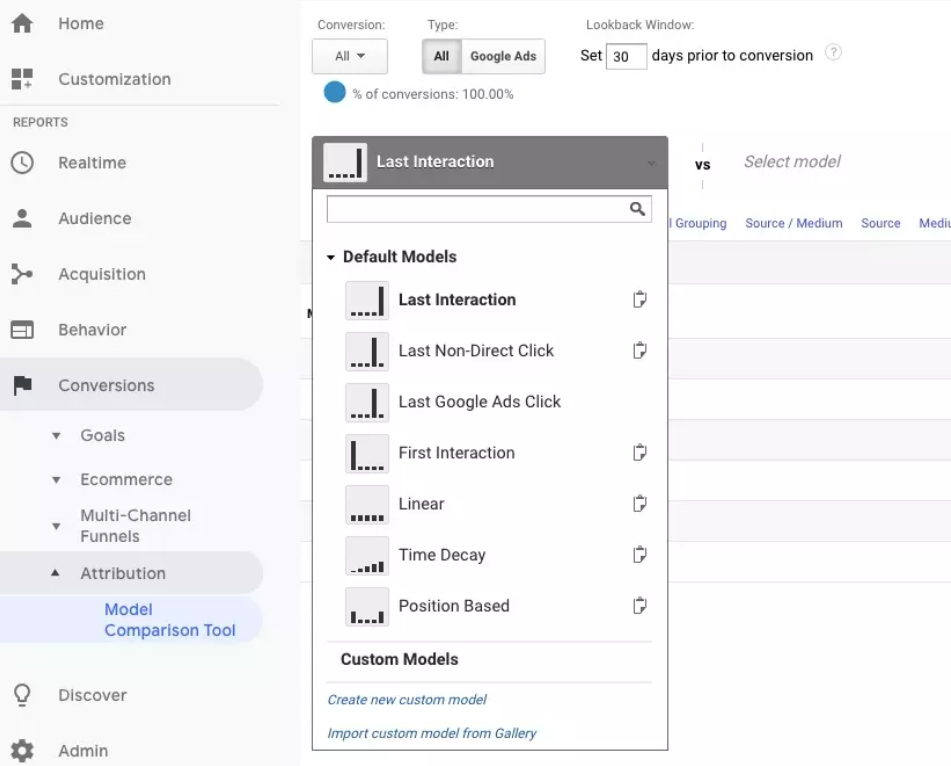

However, we know that even when organic search doesn’t directly lead to a conversion, it very often assists in those conversions. That’s why many companies prefer a model like Linear (which gives equal credit to every channel along the customer’s journey) or Time Decay (which gives credit to every channel along the customer’s journey, but a larger percentage of that credit to the channels that are closest to the sale).
Regardless of your attribution model, one of the best ways to ensure SEO is getting credit for all the conversions it produces or assists in producing is to look at assisted as well as last-click conversions.
- SEO-Assisted Conversions: An SEO-assisted conversion is one where organic search was one of the steps in the customer’s conversion path, but not the final conversion interaction. For example, this could look like someone searching for “how to build a deck,” reading an informational article on your website, then coming back to your site through a paid ad and purchasing decking materials.
- SEO Last Click (aka “Direct”) Conversions: Organic search was the final conversion interaction. For example, this could look like someone searching for “how to build a deck” and purchasing decking equipment from your website in the same session.
If you use Google Analytics, you can see this in your assisted conversions report. And, if you’ve set up goal values or e-commerce tracking, you can get a breakdown of how many conversions and revenue each channel is driving for your business.
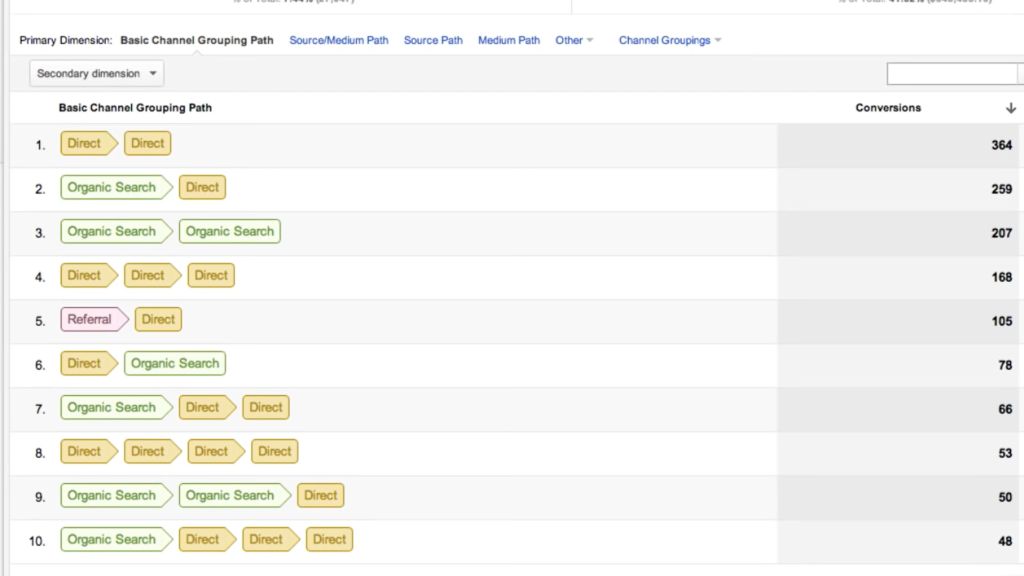

The main takeaway here is that no matter what type of website you’re working with, you can measure revenue from organic search by using your analytics to attach a dollar value to the goal of your choosing and segmenting your data by organic traffic.
How much does SEO cost?
Now that we’ve covered the “R” in SEO ROI, let’s talk about the investment.
Since placement in organic search results is earned and not paid for, what exactly does it mean to spend money on SEO?
Typically, SEO budgets fall into one or more of these buckets:
- In-house resources
- Agency resources
- Technology


In-house SEO resources
In-house resources are the employees you hire to work on SEO. This can include dedicated SEO managers, writers and editors who create content for the purpose of ranking in search results, and web developers who spend time optimizing your website for search engine bots.
It’s easy enough to tabulate your in-house SEO investment if those employees spend 100% of their time on SEO. It’s a bit trickier if their attention is divided between multiple responsibilities. If your in-house resources fall into the latter category, estimate what percentage of their time is spent on SEO and multiply that by their salary (e.g. $70,000 salary x 50% of time on SEO = $35,000 investment in SEO).
SEO agency resources
Some organizations outsource some or all of their SEO work to an agency. Agencies may have different payment models, but generally, agency expenses are either project-based or recurring monthly payments, making it easy to understand how much you’re investing in those resources.
Many organizations’ SEO programs are a combination of in-house & agency resources.
SEO technology
In addition to the human cost of SEO, companies typically pay for one or more tools used by the SEO team. This might be something like Botify, which provides SEO data, insights, and automation for some SEO tasks.
Some tools used by the SEO team will also be used by other teams. Similar to in-house resources whose time is divided between multiple responsibilities, you can multiply the tool’s cost by the percentage used by the SEO team.
SEO KPIs: How do you measure SEO success?
For most companies, revenue is the end goal of any SEO campaign or initiative. However, there are many other key performance indicators (KPIs) you can and should use to measure SEO success.
The ones you pick will depend on your goal and the specific tactic you’re taking to achieve it, but in general, we recommend setting KPIs for every stage of the SEO funnel:
- Crawl KPIs: Crawl Ratio (% of pages in your site structure that Google is crawling) and Crawl Frequency (# of crawls from Googlebot) are examples of crawl KPIs. These are good for measuring SEO activities like crawl budget optimization.
- Rendering KPIs: Metrics like render budget and page load speeds can reveal how well your JavaScript is optimized for search engines.
- Indexing KPIs: Metrics like the # of valuable pages in the search engine’s index are good for measuring if your crawling and rendering optimizations have been successful.
- Ranking KPIs: Metrics like your rank position for certain keywords and total number of ranking keywords are great for measuring how relevant and high-quality Google is judging your content.
- Traffic KPIs: Metrics like pageviews and unique pageviews from the organic search channel can reveal searcher demand as well as how appealing your pages appear to searchers in the search results.
- Conversion KPIs: Metrics like conversions and revenue are the ultimate end-goal of any SEO initiative, and reveal the ultimate business impact of your efforts.
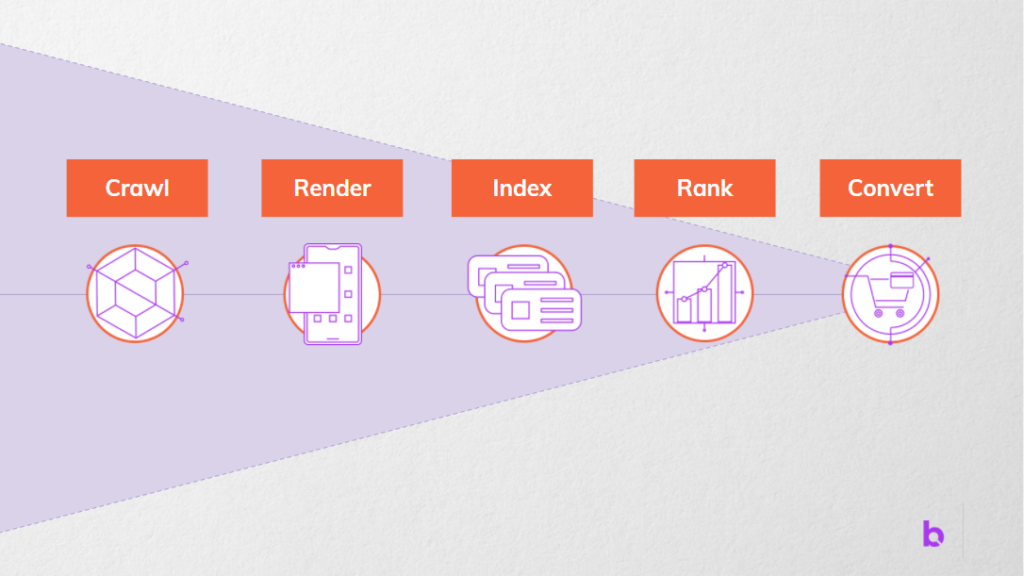

What about “traffic value” metrics?
Some SEO platforms have something along the lines of a “traffic value” metric that attempts to attach a dollar value to organic search traffic. Here’s what that metric means:
- Traffic = What these tools refer to as “traffic” is search volume, a metric that estimates how many times per month a specific keyword is searched. Those estimates often use something called “clickstream data,” which is gained from apps and plugins installed on people’s browsers that collect data from those users. “Traffic” in this sense then is an estimate based on third party data. It also uses estimated clicks, rather than actual clicks/visits to the website.
- Value = This is typically estimated based on the amount of money you’d need to spend for that traffic in Google Ads (PPC). This makes “Value” a money saved metric rather than a money earned metric.
While many find these estimates helpful for gauging the relative importance of certain keyword/URL combinations, the most accurate way to understand how much value your SEO efforts are producing is to use your own revenue data (e-commerce purchases or goal values) and segmenting it by the organic search channel.
Is SEO profitable?
Knowing how to calculate the return on your SEO investment is valuable, but what are some practical examples of cost savings and benefits it can produce?
1. SEO can increase sales
Organic search is a traffic-driving channel (likely many organizations’ biggest acquisition channel), allowing you to capture as much traffic as you’re willing to work for.
Optimized content doesn’t just create vanity traffic. Creating content that addresses the real questions people are asking about you and your offerings is a great way to attract qualified traffic to your site — people who are likely to buy from you.
By monitoring search demand in your industry and continually creating content that meets those needs, you fill your sales funnel with more people who need (and will buy) what you offer.
2. SEO can reduce paid ad spend
Investing in SEO can also help you minimize your reliance on paid advertising like PPC. While paid advertising can be a great way to drive targeted traffic to your website, you have to pay for every one of those visitors. Additionally, the cost is subject to change based on how many people are bidding on those terms, how much they’re bidding, and more.
While the effort it takes to earn placement in organic search results isn’t free, the traffic you get from it is. It also doesn’t stop showing the second you run out of budget or stop paying for it.
If, through your SEO efforts, you start to rank well for a term that’s currently costing you a lot of money in PPC, you may decide that you can afford to stop bidding on that term because you’re getting the traffic for free from organic search.
3. SEO can increase profits from content you already invested in
There’s a good chance you have immense organic traffic potential with content that already exists on your website. Many people assume that, if content exists on their website, then it’s showing up in search engines. This isn’t always the case.
In fact, we find that Google ignores about half of the content on large enterprise websites.
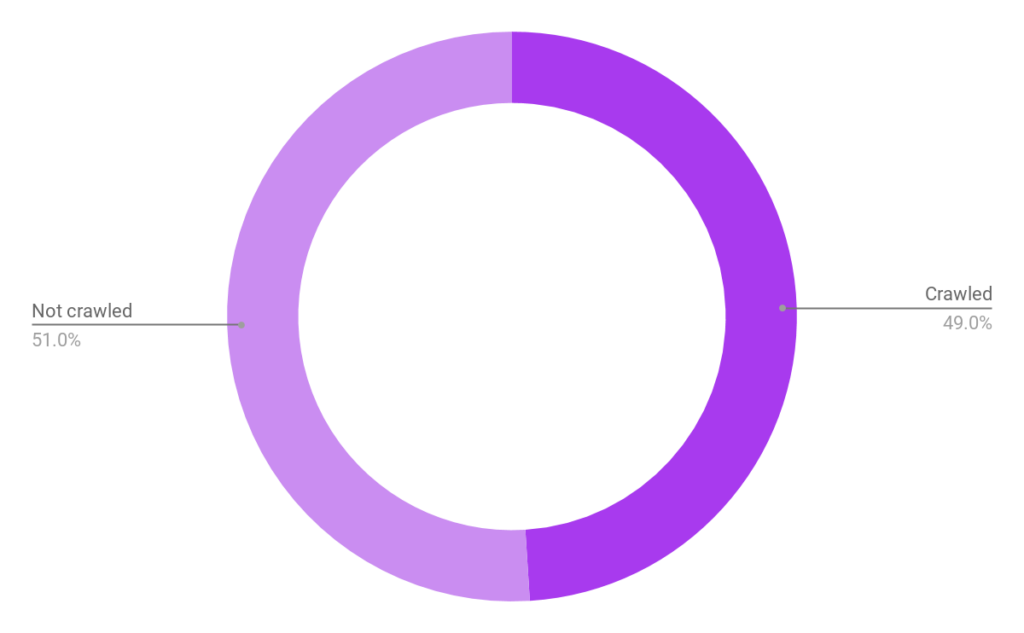

Additionally, even the content that Google can find might not perform well in search engines, meaning your target audience isn’t finding it.
For example, say you have 10,000 pages on your website — pages you’ve paid for in both dollars and work-hours over a few years. Applying what we usually see on enterprise-level websites, let’s say that Google is only finding about half of those pages. So, while you’ve paid for 10,000, you’re only able to profit on 5,000 of them.
Add to this the reality that just a fraction of those pages (let’s say one-third) are ranking on the first page of Google search results, and you only have 1,650 active URLs out of the 10,000 that you invested in.
Instead of your website working at a fraction of its potential, you can increase ROI by investing in search engine optimization strategies that get search engines to index more of the web pages that you’ve already paid for.
4. SEO can decrease your customer acquisition costs
Unlike paid traffic options like Google pay-per-click, traffic earned through good SEO practices is free and doesn’t have an end date. Rather than paying for every website visitor and then losing that traffic once your campaign ends, SEO allows you to benefit from sustained free traffic from search engines over time.
So, as you work on your SEO, you can increase the total number of website visitors while costs remain steady. Increasing visits (potential new customers) without increasing the cost it takes to procure them will lower your customer acquisition costs over time.
5. SEO can safeguard your traffic and revenue against losses
Without proactive monitoring and management to ensure your website meets search engine best practices, unanticipated issues can do a lot of damage to your organic traffic and revenue.
Those issues can include:
- Technical issues: Even seemingly benign website changes and updates can lead to unintended consequences. Without SEO monitoring, you may not catch these issues until they’ve wreaked havoc on your rankings and traffic.
- Algorithm updates: Google releases multiple minor algorithm updates per day and a handful of larger ones annually. If you don’t keep pace with these changes, you’ll fall behind.
- Competitor strategies: Your organic performance can suffer even in the absence of technical issues and algorithm updates. If you’re not proactive about your SEO, a competitor will be.
Put simply, there is a cost of inaction that you don’t want to have to pay because you ignored SEO.
SEO: Your performance marketing secret weapon
We’ve covered a lot of ground here, but suffice to say that SEO can produce the lion’s share of the qualified, revenue-driving traffic to your website.
Lucky for you, SEO is largely misunderstood among many marketing teams, which means you can leverage it as your competitive advantage.





